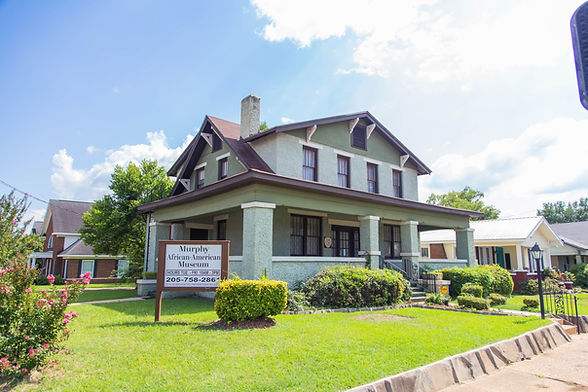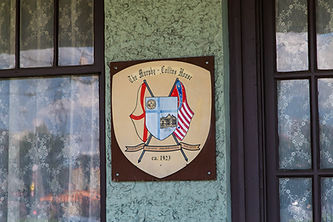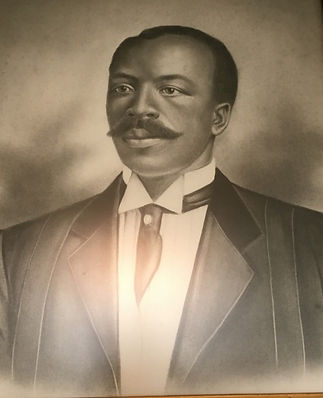
Murphy Collins Museum
2601 Paul W. Bryant Dr.
Tuscaloosa, AL 35401

Brief History
The Murphy-Collins House is the home of the Murphy African American Museum.
Tuscaloosa’s first licensed black mortician, Mr. Will J. Murphy built this two-story craftsman bungalow in the early 1920s as his private residence. Materials from the old state capitol building a few blocks away, such as bricks and windowsills, were salvaged when it burned in 1923 and used in the house’s construction.
Today, the structure operates as a museum focusing on the lifestyle of affluent blacks during the early 1900s.
Tours can be arranged by contacting the staff at 205-758-2861.
This is a property owned by the City of Tuscaloosa and managed by Historic Tuscaloosa.

The Murphys
The Murphy's home was built around 1923 by African-American contractors hired by Will and his wife, Laura. Bricks, beams, windowsills and other materials salvaged from the burned remnants of Alabama’s Capitol in Tuscaloosa. Will Murphy was the first licensed black mortician and funeral director in Tuscaloosa and also a successful businessman. His wife, Laura B. Murphy was an educator who taught at Central School and St. Paul Lutheran School before she was appointed the principal at 20th Street Elementary School.

William Murphy
William Murphy was born in 1872 in Tuscaloosa, Alabama and was married to Laura Murphy who was the principal of the 20th Street School and she was a graduate of Alabama Agricultural and Mechanical School.
He was Tuscaloosa’s first licensed black embalmer/mortician and funeral director but did not cease to continue to build his legacy. He went on to buy the entire stock of the Tuscaloosa Undertaking Company in 1916, thus making himself the sole owner of all the embalming stock in Tuscaloosa. Murphy hired African-American contractor George Clopton to build this two-story craftsman bungalow in the early 1920’s as his private residence. Materials from the old state capitol building, such as bricks and windowsills, were salvaged when it burned in 1923 and used in the house’s construction. He was one of the few affluent African Americans in Tuscaloosa and serves as a role model too many to this day.
Ms. Collins
After the Murphys owned the house, it was sold to Sylvia Collins, who lived in the home for a time and rented it to the Phoenix House, a nonprofit for women, and later men, recovering from alcoholism.
Ruthie Pitts formed the organization Revealing a Heritage in 1985, which ultimately led to the foundation of the Murphy African-American Museum. The city of Tuscaloosa purchased the house from Collins in 1986 in order to preserve it and continue the museum foundation.
Visit the Museum
The Murphy-Collins Home houses the Murphy African-American Museum. The museum focuses on both the individual families who lived in the home and on the history of African-American life and culture surrounding Tuscaloosa, AL.
The Museum is available for touring every Tuesday-Friday.
All tours must be scheduled by calling the Museum at 205-758-2238.
What People Say
DEBRA B.
"A lot of rich history and the guide was very knowledgeable in Tuscaloosa's part in the Civil Rights movement."
IAN C.
"Unique Small Museum. Downstairs has a guided tour of rooms set up similar to how the house was used. Upstairs rooms are set up as exhibits on various subjects of African American history. Guide had incredible and powerful accounts of people involved with the Bloody Tuesday events at First African Baptist Church which is one block over."
DELORES W.
"Great History of African Americans. The tour guide was very knowledgeable."
Want to add a review from your trip to see the Murphy-Collins House and Museum?
Leave your review for us on our Trip Advisor page.


